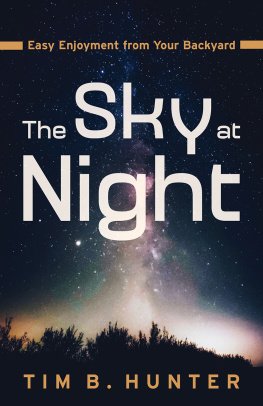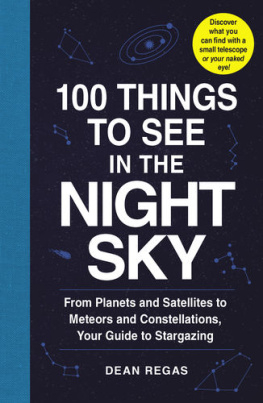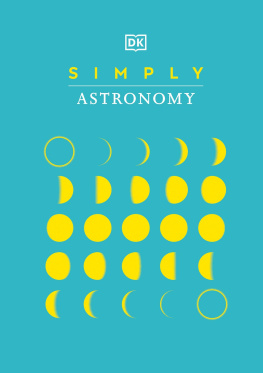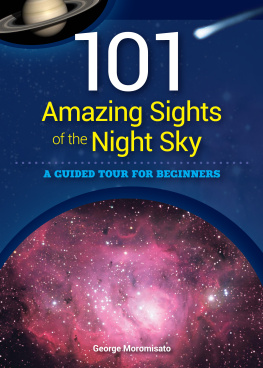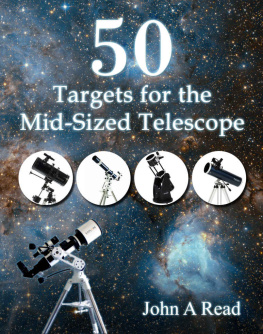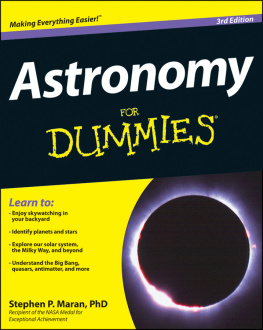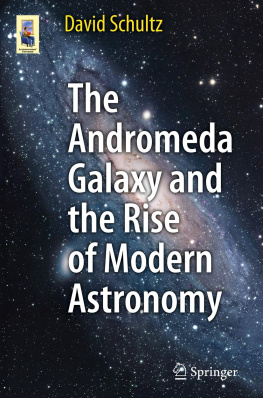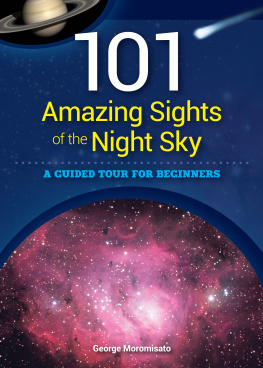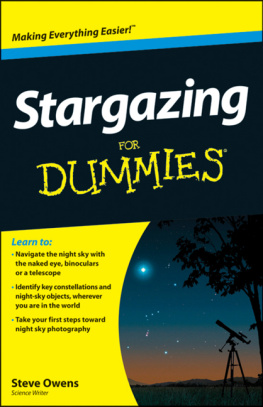Easy Things to See With a Small Telescope
A Beginner's Guide to Over 60 Easy-to-Find Night Sky Sights
Cover Image: Gulliame Blanchard, French optical engineer is photographing (from left to right): Jupiter, Venus, Moon conjunction from the VISTA (the Visible and Infrared Survey Telescope for Astronomy) site; on his left is Laura Ventura.
Credit: ESO/Max Alexander. Used under the Creative Commons Attribution 4.0 International License.
Original Image: http://www.eso.org/public/images/max_v558442s/
Copyright 2015 by Richard J. Bartlett
All rights reserved. Except for brief excerpts used in a review, this book or any portion thereof may not be reproduced or used in any manner whatsoever without the express written permission of the publisher.
First Edition, December 2015
For Joy
The Luna in my night. Thank you for illuminating my life and for staring at the stars with me
For James
Your star rose in my sky nine years ago and has continued to shine brightly ever since. I still steer my ship by its light.
For Maya
Your star is rising and glitters and glows like gold. I cant wait to see how brightly youll shine in the years to come.
For Charlie
Your star has yet to rise but will be visible in just a few short weeks. I cant wait to wonder at its light.
Contents
Introduction
Why I Wrote This Book
Ive had an interest in astronomy since I was six years old, but I didnt start to use a telescope until I was about nine or ten. My brother had a small, department store telescope that Id borrow on clear nights. I distinctly remember having my bedroom window open, with the little telescope perched upon the sill, staring at the Moon, planets and bright stars as they rose over the trees at the bottom of our garden.
Id learnt the stars from reading books, like this one. I had an idea of what to look at and although the little telescope was really not much better than a toy, it still provided me with enough inspiration to continue the hobby. A few years later, my parents bought me my first real telescope a small refractor for my eleven birthday. Suddenly, it was as though the universe had opened up.
Now, besides the Moon, planets and bright stars, I could look much further afield. The Andromeda Galaxy, the Orion Nebula, the Pleiades even double stars like the wonderful Albireo they all quickly became favorite targets for my telescope.
But then something happened. The books I owned had wonderful, beautiful images of far-flung night sky sights but either I couldnt find them or they were beyond the reach of my small telescope. Still others remained invisible to me because I simply didnt know they existed. The books I owned mostly written for young children only highlighted a handful of very easy objects and Id already found them.
I still went outside when the skies were clear. I still looked at the Moon, the planets and the night sky sights I knew about. But pretty soon I found myself wishing for more but without knowing what to look for, Id simply look at the old, familiar sights and then go back inside.
This book is really for my twelve year old self. The one who got excited about exploring the universe and discovering the hidden treasures of the night sky. The one who wished he knew what else to look for and where to look for it.
If I could go back in time and give him an astronomy book to read, it would be this one.
About this Book
Fortunately, you dont have to be twelve years old to benefit from this book. Ive written it for anyone who has a small telescope and who wants to explore the night sky, regardless of their age and experience. My hope is that youll be inspired to go deeper into the night and discover more of whats out there.
As you may have already noticed, Im not really one to use a formal writing style. Id rather write as though Im standing beside you and talking to you instead. Likewise, I try to avoid jargon and long pages of explanatory text but, to some extent, thats a little unavoidable. However, if you already own a telescope, know your way around the sky and want to jump right into it, feel free to skip ahead to the . You dont have to read every word Ive written!
If, on the other hand, youre looking to learn a little more (or its cloudy outside) then feel free to read the other sections too.
The book is divided up as follows:
In the section, Ill talk a little about the telescopes on the market and which ones might be best suited for you. \
The section will give you exactly that a few pointers and handy hints Ive picked up over the years. Youll find that many of these are already in practice by amateur astronomers (like yourself!) all over the world.
is a short section about the two most important constellations for beginners: Ursa Major and Orion. More specifically, itll show you how you can use these constellations to find others in the sky. If youre very new to astronomy, you might find this useful.
The section is where the fun begins. The section begins with a table; simply look for the current time of year (for example, early November) and then look for the current time of night (for example, 10 p.m.) The table will then tell you which star chart to use. (In this example, that would be Chart 7.)
The chart will show you the night sky as it appears at that time and also includes a list of objects to observe. The list runs from west (setting) to east (rising) but its not an all-inclusive list as Ive focused on the objects that should be highest over the horizon at that time. Some may be too low to make any observation worthwhile.
In Ill discuss the different objects youll be able to observe (including the planets) and review the information to be found on the individual pages for the objects themselves.
Next youll find the biggest section section for more on the types of objects listed in the book.)
A word about layout and the images the eBook format is very limited in terms of layout because the reader can easily change font size and style to suit themselves. Also, eBook reader apps are easily available across a number of wildly different platforms (cell phones, tablets, PCs and Macs) and they all have different screen resolutions.
Consequently, its almost impossible to get an eBook to look like the original paperback (PDFs simply dont convert very well at all) and the layout is quite simplistic as a result. For example, tables of data are very basic and only have two columns, to enable them to fit onto the screen of any device the reader is using. (Its simply not practical to produce different editions for different devices and experience has taught me that Amazon doesnt like authors to do this.)
Likewise, images may fill the whole screen or may appear quite small but this is where an eBook has a slight advantage. Unlike a paperback, you can easily enlarge an image by double-tapping it with your finger. The image will then fill your screen.
So if youre having difficulty viewing the map, finder and eyepiece simulations, try double-tapping it first and then tapping the back button on your device to return to the text. Alternatively, please feel free to email me at and Ill be happy to email you a PDF of the paperback edition completely free of charge.
Lastly, theres an that contains some useful supplemental information: for example, a basic glossary and recommended resources such as books, software and Facebook groups.
About the Author


